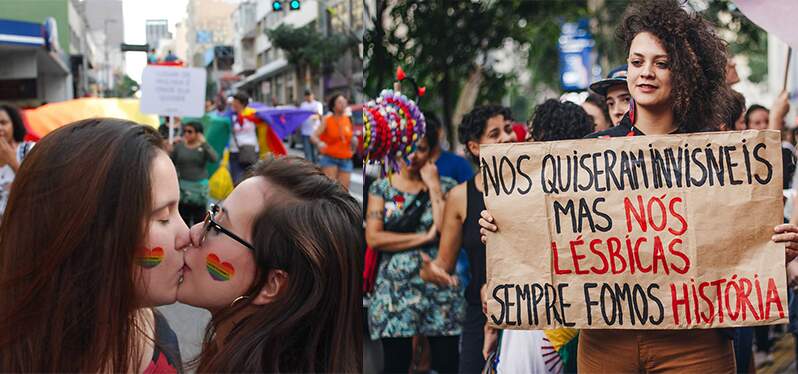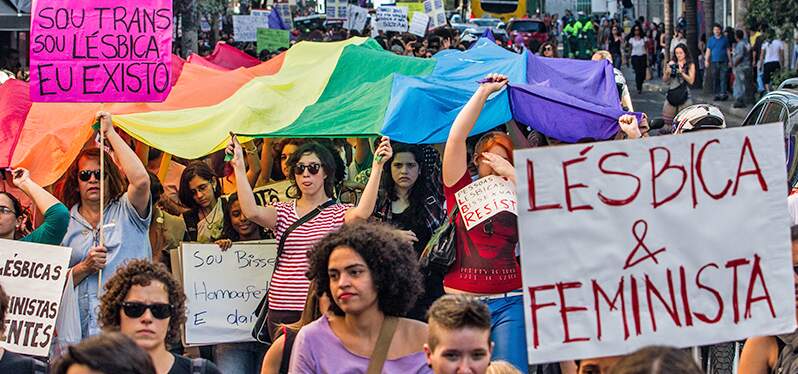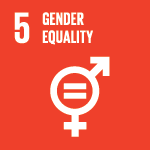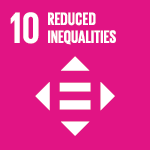Posted in: 08/29/2022
Do you know what lesbian invisibility is ?
We have already talked about lesbian visibility and its importance for conquering spaces and representativeness . Today, our main topic is lesbian invisibility and its consequences both for this group of women and for society as a whole.
Prejudice , lack of acceptance and exclusion are impact factors directly related to the theme of lesbian invisibility . Therefore, our aim is to focus on how these three factors specifically affect Brazilian lesbian women .
It is important to highlight that the topics covered affect the lives of lesbian women in general, nationally or internationally , in a more or less intense way. And the main difference in this intensity occurs in the way countries welcome their LGBTQIAP+ people and how much they invest in public policies of protection, equity and inclusion for them.
To close the article, we bring the importance of lesbian feminism for the creation of these public policies and for the reduction of inequalities. Follow!
Lesbian exclusion and invisibility have been important guidelines for the LGBTQIAP+ community, but it seems that this was not always the case . For lesbian women, the visibility of men within the movement was much greater than that of women, reinforcing prejudice even within the LGBTQIAP+ community .
Currently, August 29 is marked as National Lesbian Visibility Day . The need to create the date came from the fact that lesbians do not feel properly included and live under the double stigma: being women and being lesbian women . This factor has a direct impact on access to the labor market , security , the creation of adequate public policies and gender equity . Lesbian women have to deal with double prejudice, which adds machismo to the fact that they are lesbians.

In 2020, the United Nations (UN) released a study in which it pointed out that sexism is still a harsh reality. According to research carried out by the United Nations Development Program (UNDP), approximately 90% of the world’s population had some type of prejudice against women.
In addition to questions about equality in the level of education and business and political leadership , among others, the study showed that 28% of people interviewed worldwide considered it justified for a man to beat his wife . In Brazil, 77.95% of men assumed domestic violence and control over reproductive rights as justifiable.
Considering this scenario, in which heterosexual women already suffer the oppression of patriarchy and structural machismo , we also need to reflect on intersectionalities . That is, it is necessary to understand that lesbian, lesbian and black women, lesbians with disabilities, lesbians and indigenous people, among others, add up to social markers that increase inequalities and reinforce oppression.
Lesbian invisibility makes these women see themselves as unprotected within a larger group, already exposed to various vulnerabilities , especially violence.
In May of this year, the Observatory of Deaths and Violence against LGBTI+ released a survey in which it indicated 316 deaths from violent causes among the LGBTQIAP+ population in 2021, an increase of 33% compared to the year 2020. Every 27 hours , one person died because of LGBTIphobia in Brazil. Within these numbers, 12 lesbian women lost their lives, which represents 3.80% of deaths.
The research also indicated several other types of violence suffered by the LGBTQIAP+ population, and emphasized that, in addition to the recorded data, it is necessary to consider the great underreporting of these cases . Even so, Brazil remains the country with the most LGBTQIAP+ deaths in the world.
Between 2014 and 2017, according to an article released by The Intercept Brasil , São Paulo was the state with the highest number of murders and suicides of lesbian women. The Southeast region, by the way, concentrated most of the cases.
The report, based on data from the Dossier on Lesbocídio – from 2014 to 2017 , released by the UFRJ Social Inclusion Center in 2018, indicated that young women between 20 and 24 years old were the main victims in Brazil and related the increase in violence to age in which these women assume their sexuality more .
Another point addressed points out that lesbian women were twice as likely to be murdered in regions of the interior of the country. Misogyny ( hatred of women), sexism and lesbophobia are the main motivating factors for these deaths.
In addition to these numbers, there are others that are of extreme concern to lesbian women, but one of the main concerns the constant threat of sexual violence and rape .
According to data from the Notifiable Diseases Information System (Sinan, from the Ministry of Health), collected by the website Gênero e Número , in 2017 2,379 cases of rape were registered against this group, resulting in an average of six lesbian women raped by day . Here, too, underreporting is a factor that impacted the data since, in general, a large proportion of women who suffer this type of violence do not report or file police reports due to factors such as guilt, shame or fear.
Among lesbian women, another form of violence is added: “ corrective rape ”, when the intention to reverse the woman’s sexuality is manifested. That is, there is a sum of violence . Corrective rape cases in Brazil are not officially registered.
The site’s survey also points out that also in the group of lesbian women, black women are the main victims . They represented 58% of the occurrences, followed by 35% of white women and 1% of indigenous and yellow women – all data from 2017.
The feminist movement has been fighting for and guaranteeing several achievements for women throughout history. But also within it it is necessary to consider intersectionalities .
The most recent discussions within the movement have brought up the question of the dissolution of a hegemonic feminism and the need to be open to different types of feminisms, which consider and integrate themes related to intersectionality.

But even here, there are currents that indicate probable discrimination against lesbian women. In an article about feminism released by Huffpost , for example, we see that in the 70s and 80s the North American lesbian movement suffered discrimination from the feminist movement. The report points out that, although currently the main agenda is the exclusion of trans women in the feminist movement, lesbian women have already suffered obstacles in terms of acceptance by the group .
It is important to emphasize that, although it is not possible to say that these obstacles are 100% resolved, more and more LGBTQIAP+ movements are fighting and moving towards the acceptance and understanding of intersectionalities . That is, instead of a rupture, an inclusive , anti-racist and transfeminine feminism is increasingly sought .
The discussions brought are of great importance so that prejudice and violence against all women, including lesbians, are fought through laws and for society to set itself on a truly effective path against prejudice and violence.
Lesbian feminism , and the defense of its agendas, can be fundamental for the inclusion , representation and resolution of specific issues of lesbian women in society.


Sign up and receive our news.